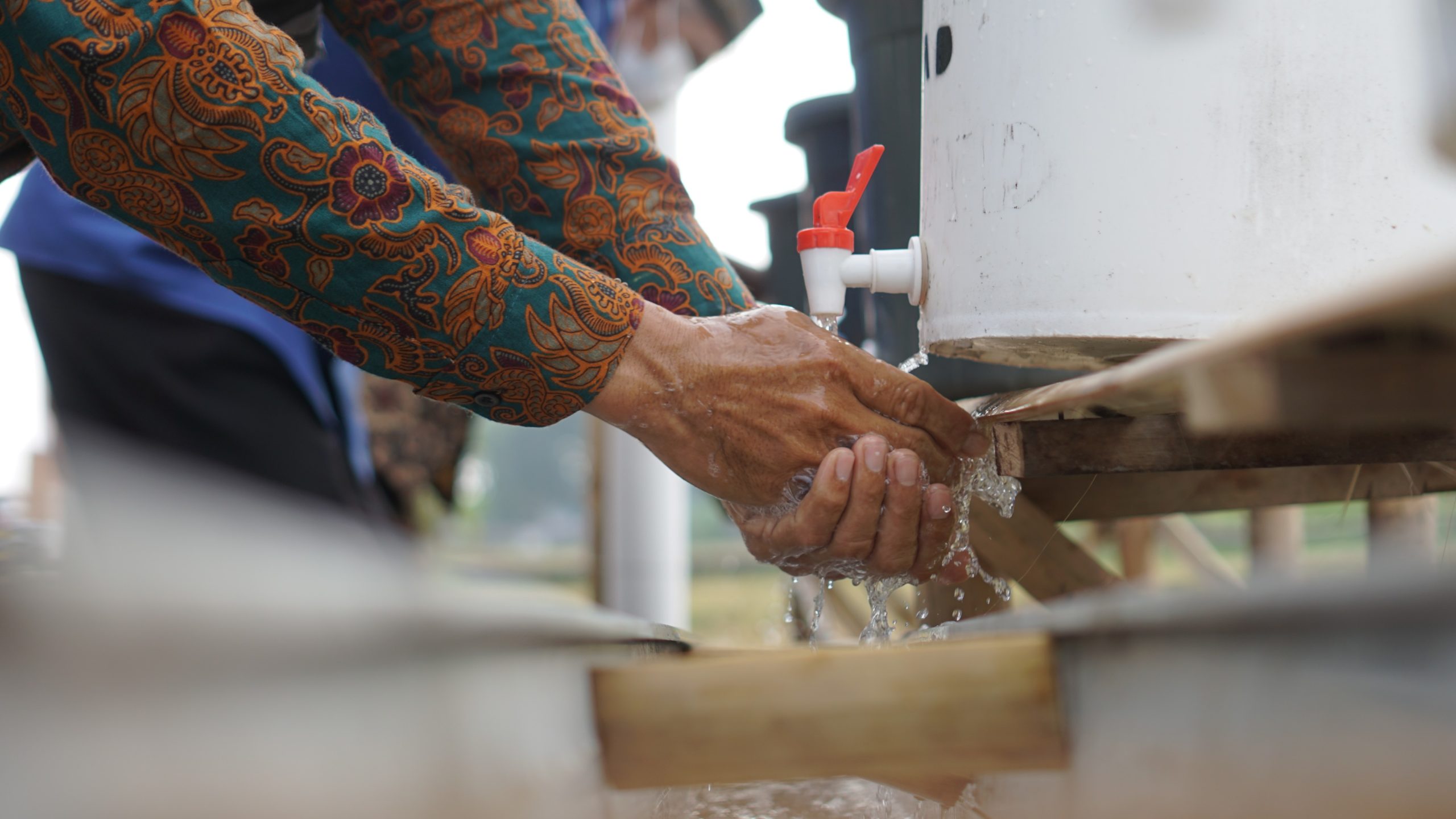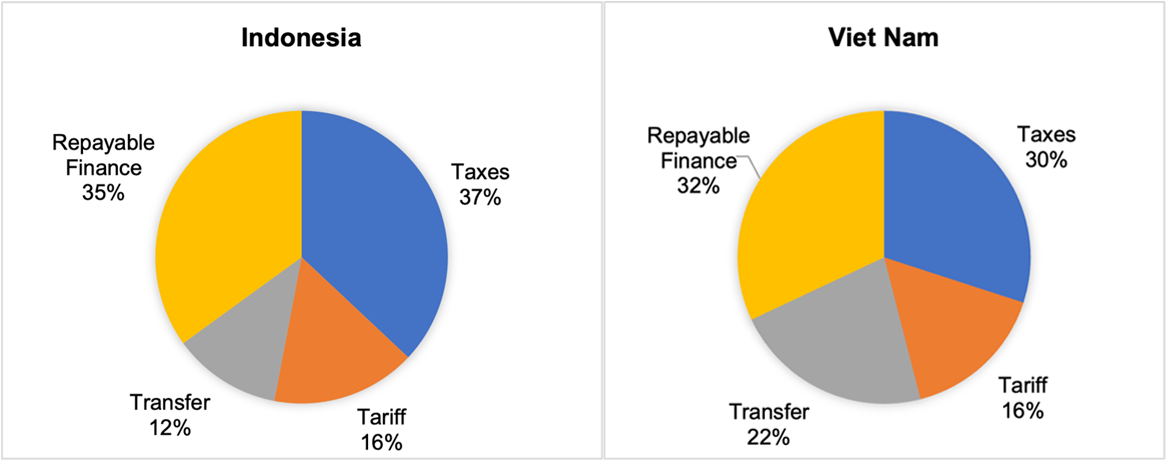
Among the crucial lessons that Asian countries have learned from the pandemic is the importance of prioritizing handwashing and ensuring access to basic water facilities. Due to considerable delays in the distribution of COVID-19 vaccines and the emergence of new variants that threaten progress, water and sanitation efforts can be vital for stemming the spread of the virus. Actions in slums and informal urban settlements have included installing temporary sanitation facilities to reduce the sharing of facilities, engaging and empowering the small private vendors that provide water and sanitation services, and increasing the frequency of solid waste disposal and management (UNICEF 2021).
Additional funding for the water and sanitation-related response to the pandemic is critical. According to the UN-Water Global Analysis and Assessment on Sanitation, the government budget was the primary funding type for annual investment in the water and sanitation sector before the pandemic (UN-Water 2021). However, budget allocations for local governments for water and sanitation investments and subsidies have decreased due to reallocations for the COVID-19 response. Governments are also dealing with depressed economies, political instability, and huge debt in the developing world and are having to prioritize other essential social services, such as health and education, over water and sanitation.
Development partners versus the private sector
Figure 1 shows the funding sources for water and sanitation in countries where data are available. The three traditional sources of finance for water-related investments are revenues from tariffs, taxes, and transfers from development partners (IRC Wash 2022). Taxes and tariffs are significant for raising revenue and the sustainability of financing in a self-supply mechanism. However, when taxes and tariffs are not enough to finance capital expenditure, the government turns to repayable finance as an option.
Figure 1. Sources of Water and Sanitation Funding in Indonesia and Viet Nam, 2019–2021
 Source: Authors’ calculations based on data from the OECD, UN-Water, and Finance Ministers’ Meeting (FMM).
Source: Authors’ calculations based on data from the OECD, UN-Water, and Finance Ministers’ Meeting (FMM).
Developing countries rely heavily on development partners to finance water management. Indonesia and India, for example, receive considerable amounts of development partner transfers for the water sector in comparison to other countries in the region (OECD 2020). Water supply and sanitation tariffs and additional water charges represent a relatively small proportion of financing sources. Although tariffs are applied for water and sanitation services in Indonesia, only 37% of water utilities have already achieved full cost recovery (FMM 2021).
Attracting private sector financiers into the water and sanitation sector in developed countries is easy. However, doing the same in developing countries, particularly in rural areas, can be challenging due to the unclear returns on investment that can make commercial financing unfeasible. When borrowing limits apply, private finance will inevitably depend on revenue generation via tariffs to service the debt. Viet Nam reported having zero experience with private sector financiers in 2020 during the beginning of the pandemic (OECD 2020).
How can the government mobilize various sources of funding for water and sanitation?
Given the challenges and the vast investment needed, governments in developing countries can adopt a mix of practical interventions to maximize the efficiency and effectiveness of existing funding sources and mobilize new sources of funding.
Make the most of existing public funding. Improving the operational efficiency and effectiveness of existing service providers and infrastructure is a prerequisite for further investment in water and sanitation and can postpone additional investment needs. If implemented effectively in the targeted communities, subsidies can be progressive tools for delivering water and sanitation services. In response to COVID-19, Indonesia has applied various financing support, such as subsidies and incentive-based programs, to ensure access to water and sanitation for poor and vulnerable households (FMM 2021).
Mobilize more funding. As important as maximizing the existing public funding, mobilizing more funding is a popular strategy that governments have taken during the pandemic. For example, several grants from the tax pool have been earmarked for providing drinking water, rainwater harvesting, and water recycling in India. These earmarked taxes are disbursed to rural local bodies for sanitation, including the management and treatment of household waste and human excreta, and fecal sludge management.
Raise repayable finance from domestic sources. Repayable financing from the international community is of significant help for developing countries. However, it is worth admitting that any dependency on external funding creates uncertainty for national water planners and policy makers, as external funds tend to be unpredictable and less coordinated than national interventions. In response to the pandemic, governments should look at repayable finance from domestic sources. For example, the Indonesian government provides free connection fees, zakat (charity funds from Muslims), and access to micro-credit to scale up domestic repayable finance.
Policy recommendations
The limited data on water and sanitation financing indicate insufficient traditional financing before and during the pandemic. Considering this challenge, we propose three policy recommendations to be taken as policy options.
First, harnessing new and innovative financing instruments will reduce the finance gap in achieving the national targets on water and sanitation, including blended finance. The experience of middle and high-income countries demonstrates that a mix of public funding and private finance can effectively bridge the funding gap. Second, strengthening partnerships with related stakeholders can encourage smart investment in water and sanitation. Third, developing regulation and enforcing it will help to mobilize domestic financial resources, including those from the private sector.
References
FMM. 2020. Republic of Indonesia Country Overview: Asia and the Pacific Finance Minister’s Meeting [1].
IRC Wash. 2022. Water and Sanitation: How to Make Public Investment Work: A Handbook for Finance Ministers [2].
OECD. 2022. Financing a Water Secure Future, OECD Studies on Water [3]. OECD Publishing, Paris.
UNICEF. 2021. Guiding Principle: WASH for COVID-19 Response in Slums and Informal Urban Settlements [4].
UN-Water. 2021. UN-Water Global Analysis and Assessment of Sanitation and Drinking-Water (GLAAS) [5].